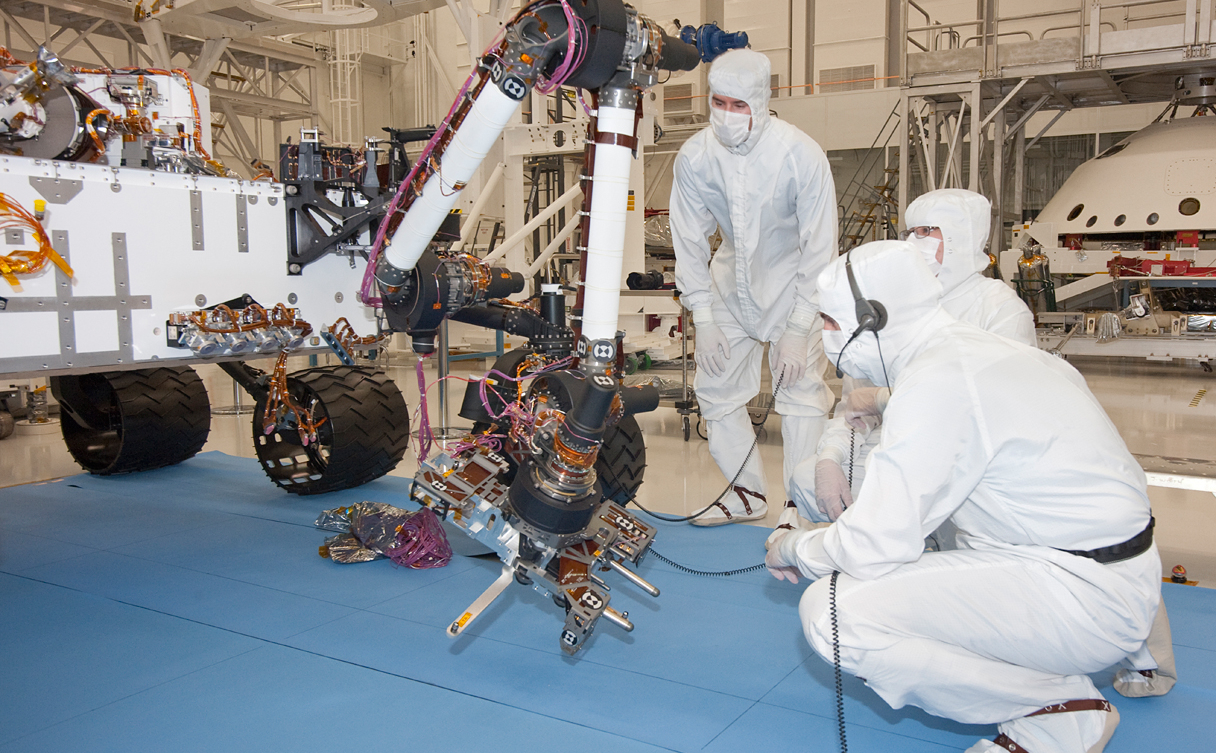NEWS | September 16, 2010
Strong Robotic Arm Extends From Next Mars Rover

PASADENA, Calif. -- NASA's Mars rover Curiosity has been exercising its robotic arm since last month, when the arm was first fastened to the rover.
In the long run, watch for this long and strong arm to become the signature apparatus of NASA's Mars Science Laboratory. After landing in August 2012, the mission will rely on it for repeated research activities. One set of moves crucial to the mission's success has never been tried before on Mars: pulling pulverized samples from the interior of Martian rocks and placing them into laboratory instruments inside the rover.
Engineers and technicians are putting the arm through a range of motions this month in the clean room where Curiosity is being assembled and tested at NASA's Jet Propulsion Laboratory, Pasadena, Calif.
"We're fine-tuning the ability to make the arm go exactly where we want it to go," said JPL's Brett Kennedy, cognizant engineer for the robotic arm. "Next, we'll start pushing on things with the arm."
The arm can extend about 2.3 meters (7.5 feet) from the front of the rover body. Still to be added: the turret at the end that holds a percussive drill and other tools weighing a total of about 33 kilograms (73 pounds).
"This arm is strong, but still needs to move accurately enough to drop an aspirin tablet into a thimble," Kennedy said.
The titanium arm has two joints at the shoulder, one at the elbow and two at the wrist. Each joint moves with a cold-tolerant actuator, custom-built for the mission. The tools to be wielded by the arm include a magnifying-lens camera; an element-identifying spectrometer; a rock brush; and mechanisms for scooping, sieving and portioning samples. The mission is designed to operate on Mars for a full Martian year, which equals about two Earth years.
MDA Information Systems Inc.'s Space Division in Pasadena built and tested the arm, incorporating actuators from Aeroflex Corp., Plainview, N.Y. JPL, a division of the California Institute of Technology in Pasadena, manages the Mars Science Laboratory Project for the NASA Science Mission Directorate, Washington. For more information about the mission, visit http://mars.jpl.nasa.gov/msl/.
2010-303
Guy Webster 818-354-6278
Jet Propulsion Laboratory, Pasadena, Calif.
guy.webster@jpl.nasa.gov


